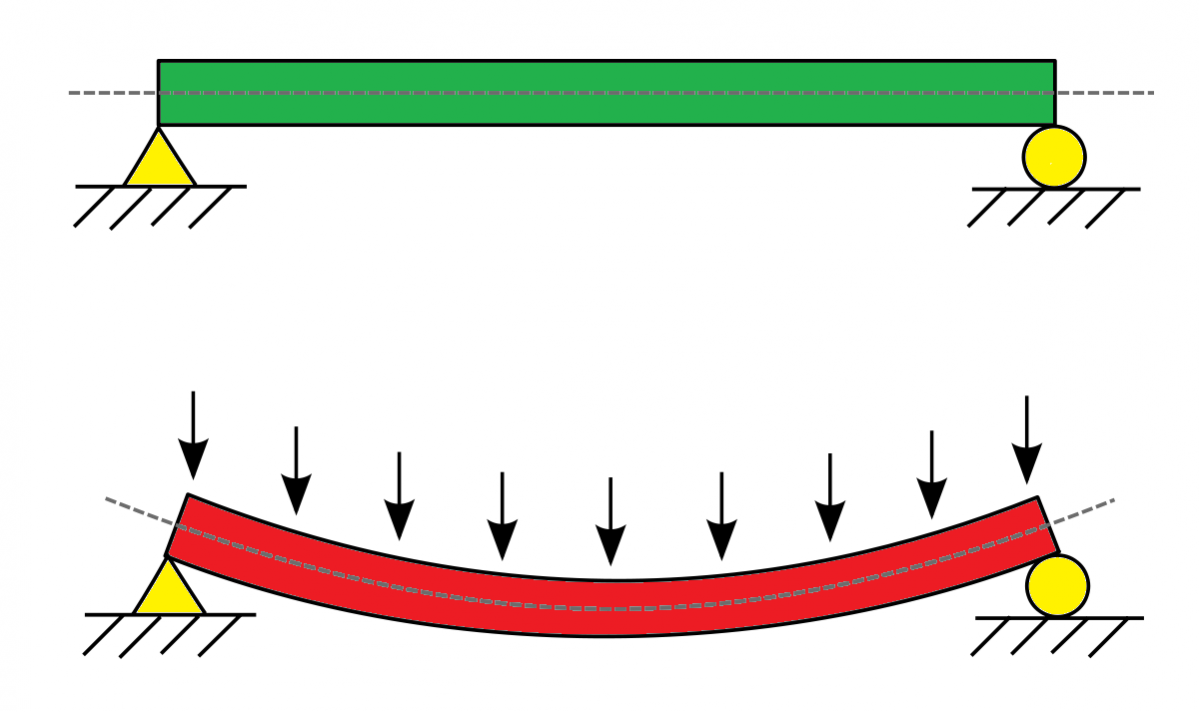Welcome to the course on Theory of Beams. Beams are generally horizontal structural members which transfer loads horizontally along their length to the supports where the loads are usually resolved into vertical forces. A beam is a structural element that primarily resists loads applied laterally to the beam’s axis. Its mode of deflection is primarily by bending. Beams collect the loads from slab and secondary beams i.e. if any other beam is resting on it. A beam also collects the load from wall resting on it and also carries its self-weight. Beam element transfers this load towards supporting columns.
Thus, Beam can be defined as a structural member which carries all vertical loads and resists it from bending. There are various types of materials used for beam such as steel, wood, aluminium etc. But the most common material is reinforced cement concrete (RCC).
In a structure, the main purpose of beam element is to provide a tie to columns or binding the columns together to form the RCC structure and to distribute the loads on slab/ floors, loads coming from wall & self-weight towards column.
Thus, a beam is a horizontal structural member subjected to a transverse load perpendicular to its axis. Beams are used to support weights of roof slabs, walls and staircases. The type of beam usually depends upon the span, type of load elasticity and type of structure

